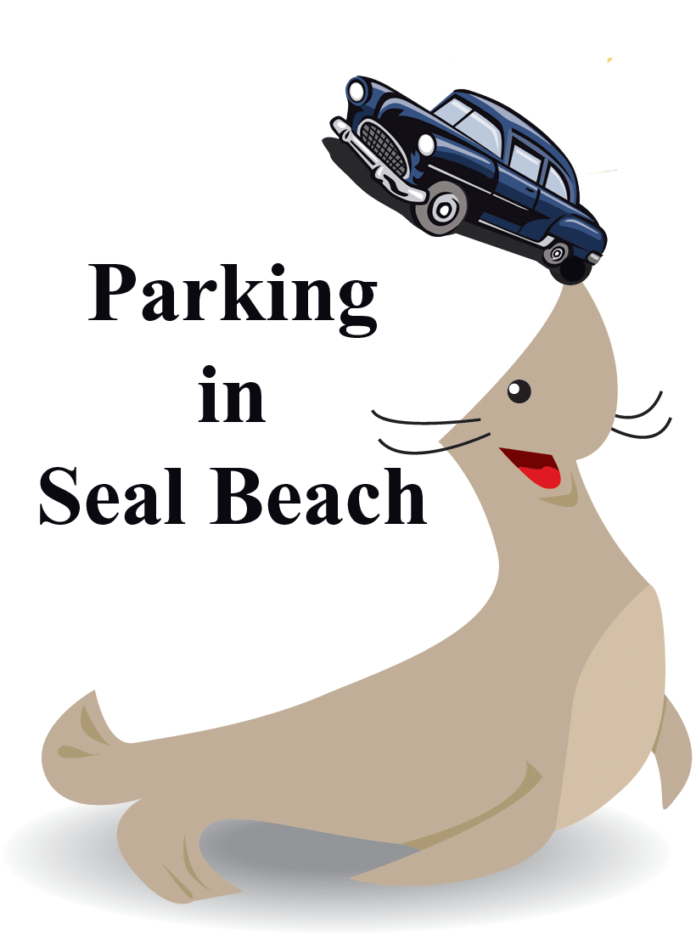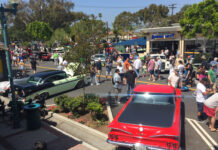The Parking Committee came up with the final version of the new parking survey at last week’s meeting. The Seal Beach city government announced the release of the parking survey on Monday, Oct. 16.
The Oct. 12 discussion focused on questions about the two-hour time limit for about 50 minutes of a meeting that began at 5:30 p.m. and ended at 6:48 p.m.
At the same time, the Citizen-Council Parking Advisory Ad Hoc Committee also looked at some of the proposed questions for a planned online parking survey.
At the previous meeting, Vice Chair Ken Husting had asked staff to clarify the committee’s goals. With that in mind, Seal Beach Police Chief Michael Henderson read from a statement he had prepared.
Henderson said the primary mission of the Parking Committee is to make a recommendation about paid parking on Main Street.
“It’s crucial that we remain focused on this particular goal,” Henderson said.
He encouraged the Parking Committee members channel their dedication to that mission and not be sidetracked by broader issues.
Chair Margo Wheeler asked to have the entire the statement included in the minutes.
Parking consultant Julie Dixon said she thought there was one reference to the two-hour time limit in the parking survey.
According to Dixon, the survey question was: “I would support paid parking on Main Street if I could pay to park for longer than the posted two-hour time limit in the main street parking lot.”
District Two Council Member/Mayor Tom Moore looked at a related question.
“‘The parking time limits on Main Street make it hard for customers to spend enough time at Old Town businesses, says replacing on street time limits with paid parking would be a better way to give customers more flexibility to stay longer,’” Moore said.
“So if we limit it to two hours, that question doesn’t make sense to me,” Moore said.
Moore’s concern was apparently related to other questions.
“The issue is the beach people would use the Main Street and then we’d have less people going to the businesses,” Moore said.
He also suggested keeping another question: “do the current on Street time limits typically provide enough time for you.”
“It’d be interesting to hear what the answer is,” Moore said.
Moore cited another survey question. “‘I would support paid parking on Main Street if I could pay to park for longer than the posted two-hour time limit in the main street parking lot,’” Moore read.
He suggested removing three questions and leaving the Old Town visitor set of questions alone.
“I think we all want to have what’s best for the businesses,” Moore said.
“To keep the high turnover, we need to keep the two-hour time limit, in my opinion,” Moore said.
Wheeler wanted confirmation that Moore did not want the city to ask if people want more than two hours.
“Not if it’s going to impact our businesses negatively,” Moore said.
Wheeler cited her experience at her beauty shop, where getting your hair done takes a long time.
Wheeler said she thought it would be interesting to know if there are businesses that would benefit from the two-hour parking.
Dixon said questions for employees and business owners of Main Street were specifically targeted to those groups “specifically to understand their feedback on the time limits and to really get their feedback on the paid parking aspect.”
Dixon said this went back to one of the original questions on whether they wanted paid parking or not.
“My issue with that is, what do we do with that data,” Moore said.
“They say, ‘yes we need more time,’ but, then, you know the beach people that go to the beach are going to use those spots and then they lose more business, so we have to factor in that we’re a beach town and that those spots are going to be used by people going to the beach,” Moore said.
Dixon suggested limiting the question to only the Main Street lots for the first phase of the project and then monitoring the data.
Moore argued that the question was confusing.
Dixon suggested changing the wording.
Chamber of Commerce appointee Rob Jahncke said he agreed with the concept of not wanting beach visitors to park on Main Street. He suggested adding a longer time period for non-beach visitors to park.
“There may not be a problem, but we don’t know unless we ask the question,” Jahncke said.
Dixon said you could eliminate the questions for property owners and employees.
Moore said he would be fine with that.
The other committee members were asked for feedback.
“I’m going to defer to the expert,” Wheeler said. “She seems to have this figured out.”
Dixon wanted to keep the question about the ability to extend time in the Main Street lots.
Dixon and Moore discussed the specific working of the question.
Dixon came up with: “I would pay to I would pay to park for longer in the Main Street paid parking lots if I could stay longer than the posted two-hour time limit.”
Moore reminded her that Jahncke had suggested adding Main Street businesses.
However, Dixon argued that there would be a challenge with enforcing that as you can’t regulate where people go.
Moore, however, believed the city could correlate the data from the answers to that question with the data from the answers to the previous questions.
However, according to Dixon, they were also looking for information about paid parking on Main Street proper.
Dixon didn’t believe there were, at that point, any questions about paid parking on Main Street itself.
The committee turned to the rest of the parking survey before returning to the two-hour limit issue.
At length, Chief Henderson suggested coming up with a completed survey that night.
Returning to the subject of paid parking, Dixon said that if there’s an expectation that if you offer something for free without a qualifier, the response will be “I would love everything for free.”
Committee Member Matthew Terry suggested: “Considering the current parking restrictions and parking lot rates on Main Street and surrounding areas, I don’t think there’s a need to change the way things are.”
That question would be for everyone who responds to the survey.
Terry also suggested adding a comment box.
Dixon wanted the committee to be prepared if they get more than 500 responses to the survey.
Moore suggested limiting the comment to a certain number of characters.
Dixon speculated that it would take participants 15 to 20 minutes to fill out the survey.
Henderson wanted confirmation that this was the final product.
There appeared to be consensus on that point.












